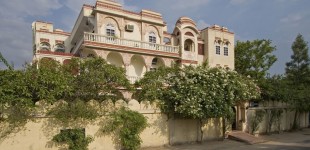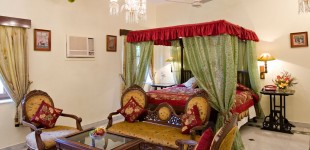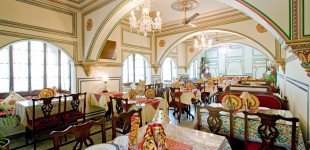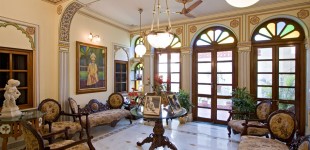A flamboyant showcase of Rajasthani architecture and flair at its most irresistible, the Pink City of Jaipur has long been established on tourist itineraries as the third corner of India’s “Golden Triangle”, just 300km southwest of Delhi and 200km west of Agra.
Though the “Pink City” label applies specifically to the old walled quarter of the Rajasthani capital, in the northeast of town, glorious palaces and temples, in an assortment of styles that span the centuries, are scattered throughout the whole urban area. The walled city is suffused with a gentle pink light, flashed through by bright turbans and saris, while in the pink shops and houses that line its orderly streets, craftsmen create objects of delicate beauty with time-honored traditional skills, in full view of the hectic swirl of shoppers and tourists outside.
Lying on the bed of a long-dry lake, Jaipur laps against hills in the north, east and west, and rolls across the open plains to the south towards Bundi. Getting and keeping your bearings is simple; even if you can’t see the Pink City, the hills behind it in the northeast, topped by the high walls of the Nahagarh Fort, are always conspicuous.
The Pink City houses the principal tourist attractions – the Palace of Winds or Hawa Mahal, and Jai Singh’s City Palace and Observatory – while the Ram Niwas Garden, Zoo, Albert Hall (Central Museum) and Modern Art Gallery are a short way south of the walls, within easy walking distance of its gates. Broad and widely spaced roads in the newer areas outside the walls accommodate the industries and businesses that underlie the economy of the modern city, as well as most of Jaipur’s hotels. Mirza Imail Road is the main route from west to east (south of the old city), on which you’ll find the GPO, hotels and restaurants and some of the larger boutiques and jewellery shops. Station Road runs from the railway station in the west, past the bus stand and on to Chand Pole, the westernmost gate of the old city.
Most travelers spend a good few days visiting the sublime palaces, exploring the ruins and wandering through the bazaars, renowned for carpets, clothes, and the best selection of precious stones and metals in India.
If you’re anywhere near Jaipur in March, don’t miss the Elephant Festival, one of India’s most flamboyant parades, celebrated with full Rajput pomp. Makar Sankranti (14 Jan), predominantly celebrated in the east of India, here takes the form of a kite festival, filling the air with gaudy paper kites for days leading up to it.





Chellie Kew
Hello Kavita,
I am a very good friend of Larimore Hamptons out of NYC. I will be heading to Mysore from the 3rd to the 7th and thought it might be nice to head North and see additional parts of India. My return ticket is the 12th on November and I head out of Bangoloria National Airport.
Will you be around these days?
All best,
Chellie
Oct 25, 2009 @ 10:45 am
karimkhan@vashikaranspecialist
nice posting thanks for article.
Oct 18, 2016 @ 8:32 am